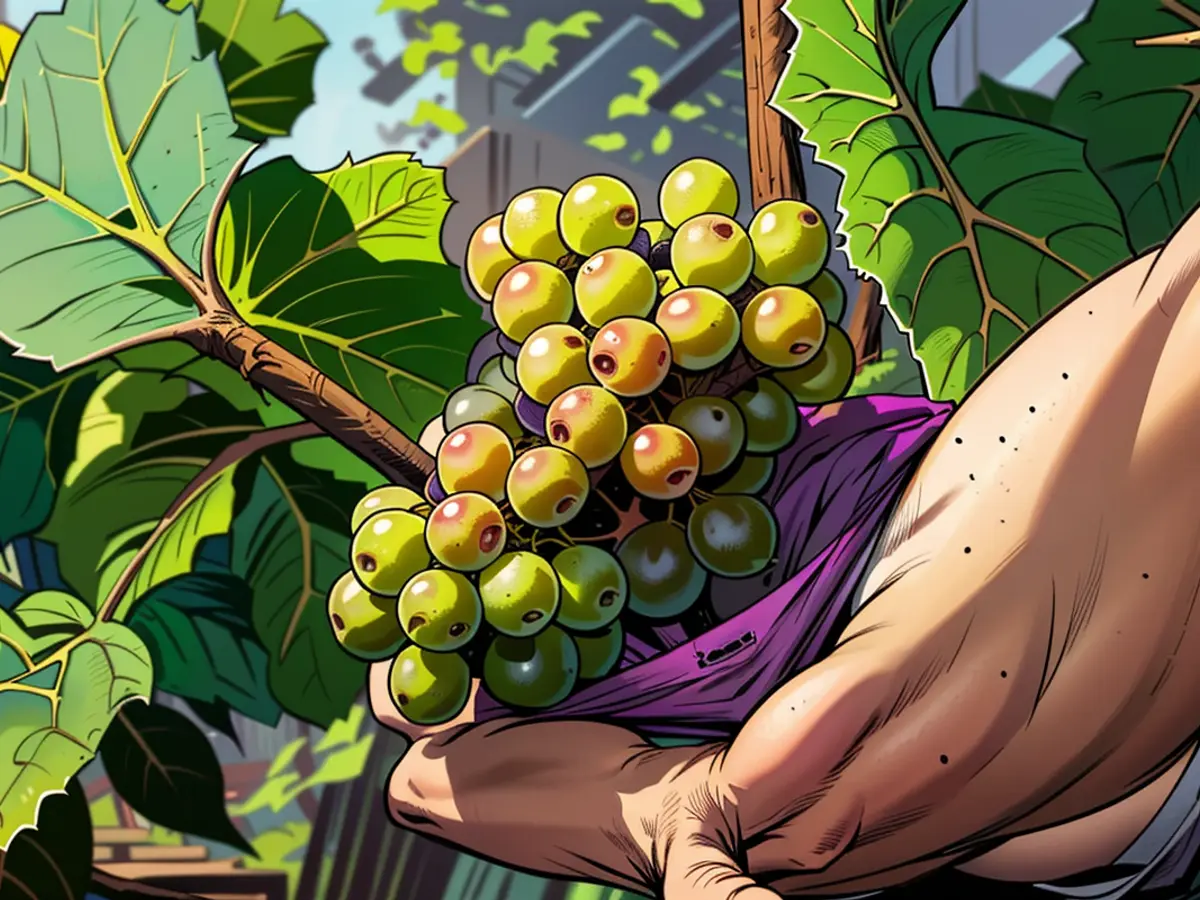- Winegrowers expect low yield - top wines possible
Despite all efforts, the prolonged night frost in April has made 2024 a challenging year for Saxon viticulture. "But everyone will manage to harvest something, albeit a small one," says Felix Hößelbarth, chairman of the Saxon Winegrowers' Association. The "green wall" of vineyards in the Elbe Valley belies the fact that there are "significantly fewer grapes hanging on the vines than in normal years." This applies even to areas that were not reached by the frost or were protected by fire. "In the end, we are expecting a very, very small harvest."
The association head estimates that only 20 to 30 percent of a normal harvest will make it into the cellars. And besides the investments in maintaining and caring for the facilities for the next season, the harvest also entails additional effort. "There are years when everything comes together: late frosts, then too cold and wet weather during bloom, which was very unfavorable for the young shoots," reports Hößelbarth. "Only a small part of the blossoms then became berries."
Adverse conditions persist after the frost
Wet and warm weather in June/July with small hailstorms, an "insanely early" ripening of the first berries, wasp and insect damage - "it's not like we're jumping for joy," describes Hößelbarth the mood among winemakers. Hope lies in the fact that the vines in most of the vineyards have enough reserve substances stored. If nothing goes wrong next year, the next one could be a normal season again. "And we have the luck that we have had two large harvests before; now the challenge is how we will manage to get through 2025." A slowed-down sales or earlier bottling of the next vintage could help fill the gap that is emerging.
"The maintenance of the cultural landscape is a long-term task and can withstand a lower yield year if winemakers, guests, and politics stand together," says Radebeuler winemaker Karl Friedrich Aust. With fire, he was able to protect his home hill and save a lot of core area. "There, we have good cards." Overall, he estimates 61 percent damage - and every week, every month brings another challenge until the harvest. The investment in frost candles or a few meters of coal also prevented that stocks freeze and have to be replanted. "That would be three more years without yield."
Winemaker Klaus Zimmerling in Dresden-Pillnitz, on the other hand, is disheartened with two to four percent of his usual yield. "It's almost all green again, you can see the vines, but there's nothing on them," he says. Only at the very top of the steep slope is there a small chance for ten percent. A consolation: "We're glad that we have usable wood to prune for next season and don't lose another year." To compensate for the expected deficit for 2026, he buys finished bottled wine from a winery in the Pfalz. Other winemakers are relying on grapes from other growing regions "and creating new and interesting cuvées," reports colleague Aust.
Even at the State Winery Schloss Wackerbarth, there are significantly fewer grapes than usual, both rescued and late-ripening ones. "There will be a grape harvest, but with a noticeably reduced quantity," says spokesman Martin Junge. The losses vary depending on the location and grape variety. The state winemakers are now facing a significant challenge, having to prune damaged canes, and the different stages of ripeness in the grapes require multiple passes or selection beforehand.
Financial aid for Saxon winemakers
In late May, the Winegrowers' Association estimated the loss of yield due to frozen canes in the Elbe Valley at around 34 million euros, with losses ranging from 83 percent, from grape cultivation to wine production and marketing, depending on location and variety. The Saxon cabinet released up to 22 million euros in funding for the severe damage in fruit and wine production at the beginning of June, with applications to be submitted from late September, as announced by the Agriculture Ministry in Dresden. The federal government also wants to support the affected federal states and has applied for financial emergency aid from the EU Commission's agricultural reserve. The procedure is still ongoing, with estimates ranging from at least 210 million to 254 million euros.
Hope for a golden autumn and a good wine vintage
Everyone is now hoping for a golden autumn. The grapes need stable high-pressure weather, not too hot but sunny, "and a nice rain in between," as they say in unison. The harvest may begin with the earliest varieties as early as the last week of August, says Hößelbarth. The question remains whether grapes of different generations will be harvested together or in several passes. Last year, the harvest lasted from early September to the second half of October, "but today, it could be 14 days earlier."
The winemakers are banking on 2024 being at least qualitatively a good year. With significantly reduced yields, the sun and nutrients benefit fewer grapes, says Hößelbarth. "It would console us a bit with this vintage if we could produce a few top-quality wines."
Karl Friedrich Aust reports that in the best locations, grapes even have to be cut out "to get the quality." These top fruits are very carefully protected. In 2009, when frost of minus 29.5 degrees caused only half the loss, there were also "dream wines." But the quality always shows itself "when the must is in the cellar."
In spite of the protection measures, winemaker Klaus Zimmerling in Dresden-Pillnitz is expecting a meager 2-4% of his usual grape yield. Despite the challenges, Zimmerling is grateful for usable wood for pruning next season.
Felix Hoßelbarth, the association head, expresses hope for a stable high-pressure weather in autumn, allowing for a golden autumn and a good wine vintage, despite the significantly reduced yields.








